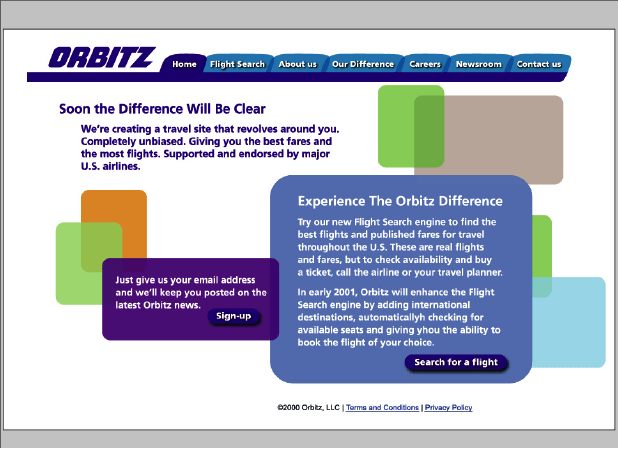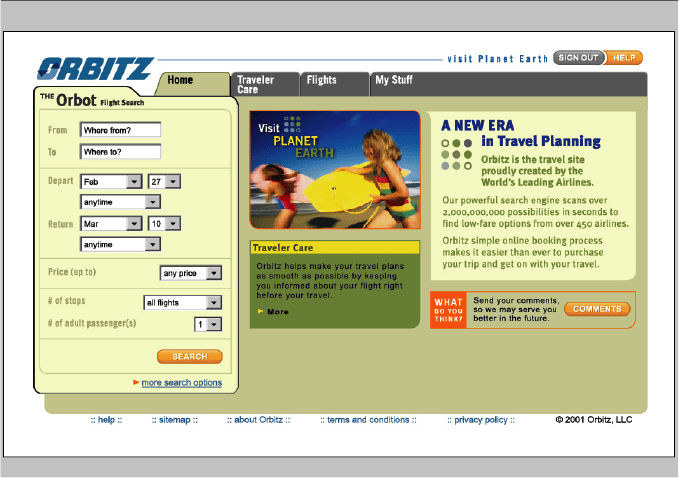Orbitz was the first company I was involved with that exceeded $1B in valuation. We achieved what they now call Unicorn status.
The Unicorn name came from an article from venture capitalist Aileen Lee in November, 2013, and from that point on, the name Unicorn has permeated the startup culture.
When I look back on the Orbitz experience I see a Company that did a lot of things right even though we were working in uncharted territory. A startup in the Midwest didn’t have the support infrastructure as our West Coast counterparts. In some ways a lack of support was a challenge, but in other ways it pushed us into innovating completely unique solutions that propelled us. Orbitz was one of the first commercial companies to implement RedHat Linux, we were one of the first to use JAVA as a programming language, and we were the first to implement Oracle RAC — all considered standard technologies now days. We were even running our development processes Agile-like a decade before Agile was coined as a term.

Those of you who are familiar with the Orbitz history know the challenges that company has faced over the years. For example, we launched June 2001… 3 months prior to the tragic events that happened on September, 11 2001. We started a DOTCOM during the recession and in the middle of the DOTBOMB. And we started a travel business that generated nearly all of its revenue from Airline ticket sales when many of our Airline partners were on the verge of bankruptcy…
So how did we survive and achieve Unicorn status?
First, I believe the main reason we survived is because we hired super smart, dedicated, hard working people that sincerely cared about our success. Our recruiting process was rigorous to say the least. Our CEO, Jeff Katz, personally interviewed every new-hire and our CFO, John Park, was incredibly scrupulous when it came to adding headcount and increasing operating cost.
At the time we viewed these strict policies negative because it put a lot of work on our staff. We saw the money come in from our Airline founders and at the time it was easy to think there was an unlimited bucket of money raining on us. However, as I look back I see the policies our executive leaders enforced is what ensured our survival. If they had wasted the money we received in stage funding like many businesses do now days we would have never survived the completely unexpected events of 9/11.
Secondly, we focused on our customers and continually tested the market. We released rudimentary functionality as we built the platform and continually tested with our customers. Ideas we thought might be good that weren’t overwhelmingly adopted by customers were scrapped. We averaged 2 out of 10 ideas that actually landed in production. This approach established a very loyal customer-base that stayed true to our brand.

We carefully built our functionality starting with Air, then Car, then Hotel, then packaging. We didn’t try to build everything at once. We partnered with other suppliers until our platform was ready. This approach gave us cash flow early in our evolution that ultimately led to us surviving 9/11. We were 100% on our own after 9/11 and received zero funding from any third party source.
Unicorn Classification
I put Unicorn businesses into two buckets. There are the Hype businesses that quickly hire a ton of people and generate loads of press. And there are the Quiet businesses that grow strategically. In Chicago we have examples of both.
Groupon is a good example of a Hyped business. They grew fast, raised millions in funding, and benefited from an unlimited sea of press. Now they are on the decline. They recently laid-off 1,600 employees, closed operations in non-profitable areas, replaced many of their executives, etc. It is clearly going to be challenging for them to survive long-term.
Unicorn examples in Chicago that I classify as Quiet include Signal, who’s CEO is Mike Sands the former Orbitz COO, and Raise.com who is led by some young and smart entrepreneurs. I had never even heard or Raise.com until recently. They are a great example of a solid well thought out business. They are growing slow and steadily creating value for their customers without taking unnecessary risk or setting unrealistic expectations through overly Hyping their business. It is very impressive that they have achieved >$1B in valuation quietly in a small startup market like Chicago.
Understandably it is hard to take the quiet route when we see the Hyped businesses everywhere we look, but we need to keep in mind that the point of creating a company is to build a long-term viable organization. Investors are ultimately investing in and trusting the leadership team. Behind every penny is someone that trusts us to deliver what we promised. As entrepreneurial leaders we need to take that responsibility seriously and spend every dime like it is our own.
The Business Model
The WSJ recently released its Billion Dollar Startup Club list. About thirty-nine of these companies are platform businesses. The other 39 are linear. According to INC Magazine, investor confidence is approximately 25 percent higher in the platform startups than linear.
“Picking the right business to be in is the most important decision when starting a company.” Tony Hsieh, Zappos startup CEO
The key is to pick a business model that has a high potential with less competition. The platform business model, in my opinion, is the best for long-term sustainability. Zappos is a good example. They focused on selling a small subset of products (Shoes). As the online shopping world evolved their market share shrank opening them up to acquisition by Amazon. The Zappos business has continued to be financially pressured and they continue to struggle to achieve profitability. Amazon, is another example. Although they are a household name around the world they still struggle to achieve profitability. There platform business Amazon Web Services, however, is incredibly successful.
Platform businesses are typically based on consistent revenue model. Signing up customers for a monthly fee helps guarantee cash flow vs businesses like Orbitz, Zappos, Groupon, etc. that must attract customers every day to generate sales.
Accordingly, there are many traditional businesses such as Adobe who have pivoted from a linear product sales offering to a platform subscription. Microsoft is doing the same with Office 365. Constant monthly revenue is the key to long-term survivability. Products bring in big $$ in large spikes whereas platform subscriptions are more predictable.
Ok, we agree we need to build a platform. What comes first?
The hardest problem with building a platform businesses is that you need two components to be successful that are dependent upon one another. If Uber wants to grow, it needs more drivers to get customers and more customers to get drivers. Neither works without the platform behind coordinating both supply and demand.
When building a platform revenue doesn’t come until the platform is operational. If you build customers first based on Hype and then don’t deliver they will quickly become dissatisfied, leave and likely never come back.
I am a proponent of continuous A/B testing. Roll features out, test, evaluate and change. The sooner a working prototype is in the world the quicker you find what works and what doesn’t as well as start generating revenue. Uber started small, perfected their platform and then grew market by market, which is clearly why they are incredibly successful.
The problem with many platform businesses is they build what they “think” is right. By the time it goes out the door they often discover the customers don’t embrace the product as expected. This process has killed many tech businesses. They lose their valuation when the product doesn’t work as promised and they die on the vine. Releasing small features that attract subsets of customers enable a business to learn what customers want while generating revenue. Again, look at the Uber model. They started in a niche market testing, evolving and perfecting their platform to achieve worldwide recognition and valuation they have now.
Go Mobile First
Mobile is the key to capturing seamless engagement with end-users. Most want to start with a full-blown fully functioning, “perfect”, website, but I believe perfecting and testing an engagement model on mobile should be considered as the first priority.
A company doesn’t have to launch with both iOS and Android apps. There are countless examples of platforms only leveraging one operating system at launch and after becoming successful build the other. At Orbitz, we started with iOS apps. It was several years later before we introduced apps for Android. The key is to prove that you can get strong recurring usage on one operating system and then replicate that model.
Show me the money
Raising seed funding from family and friends is the easiest way to start a business. They invest in you without needing to understanding what you are doing. However, unless your friends are Warren Buffet and Bill Gates, it is hard to raise sufficient capital to build a Unicorn. Unicorns need to be valued over $1B, which is done by investment firms that comes through staged funding. Institutional Capital firms are necessary to raise material capitalization and help get to the coveted $1B valuation, establish a brand and beat others that may end up launching a similar concept.
People often think of a VC firm as organizations that take risks. This couldn’t be further from the truth. VC’s have investors that expect them to generate ROI for them. Ones that don’t generate a return for their investors don’t last long. Institutional capital firms look for a strong management team, a product they can understand and a business model that can generate revenue.
Conclusion
At the end of the day the people are the key to success no matter what you are doing. Surround yourself with only “A player” people. When thinking about people I follow the saying, “Hire Slow and Fire Fast.” Use the core team to develop the business Idea with a strong slant to creating a platform business. Start with mobile development first and test small features and start generating cashflow. Use the A/B testing experience to refine the business plan. Use family, friends, goFundMe or other sources to get startup funding. Then only when having a mature enough business model approach Institutional Investment firms. Finally, work through staged funding steps exceeding all objectives at each stage and achieve Unicorn status.
